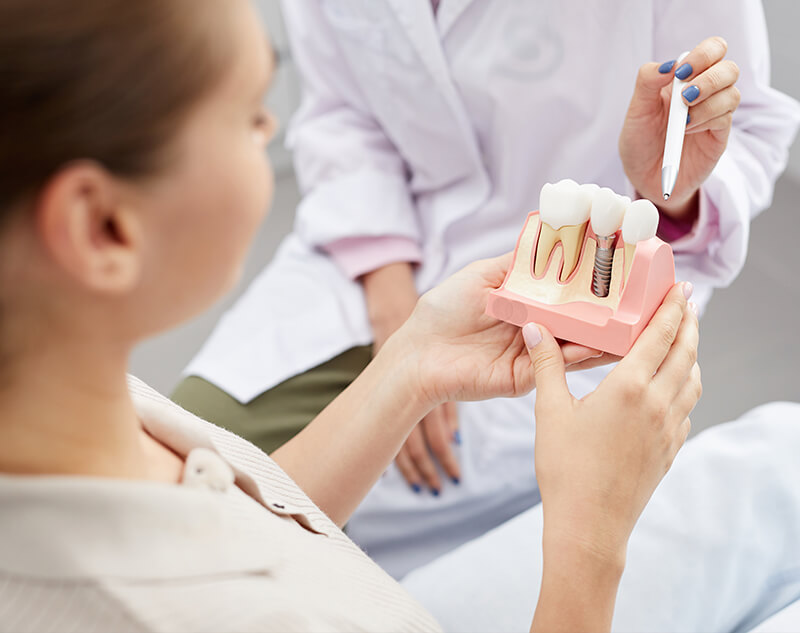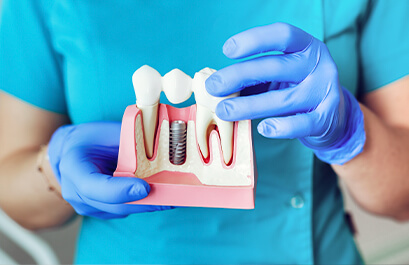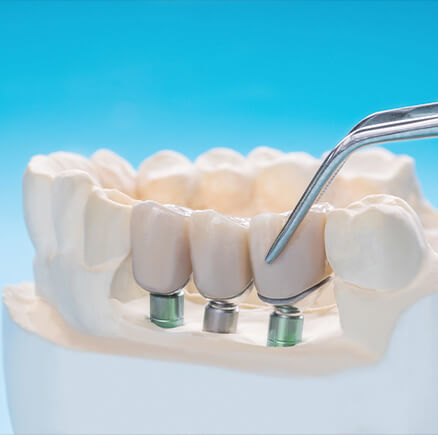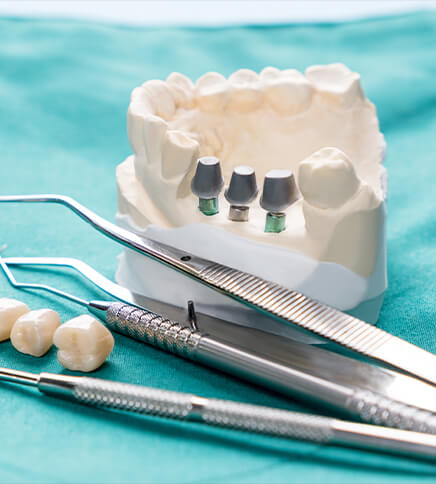
Through our dental implant treatments, we seek that our patients obtain an effective solution to replace missing teeth with functional pieces, with a beautiful and natural appearance in their smile that will be maintained in the long term.
The professionals in charge of this procedure in our clinic are dentists who have completed an academic specialization of 3 years and have experience in dental implantology, making them capable of performing advanced treatments, tailored to the needs of each patient.
This response varies from patient to patient. To establish the ideal treatment, it is important to assess the state of the maxillary bone, the state of the oral tissue, among others, which is why it is important that you attend your evaluation appointment and analyze all the possibilities with your implantologist.
There are 4 types of implants:

They are the ones that are placed on the jaw bone, under the gum tissue and that protrude through the gums. They are unconventional and are chosen when the bone height is insufficient to place the implant.

They are used when there is little bone and as an alternative to not grafting it, the implant is inserted into the pterygoid bone, which is located in the upper jaw.

They are the most commonly used as they allow a prompt integration with the bone. They are fixed in the maxillary bone or in the mandible by means of a surgical procedure, these in turn, can be of 3 types:
Cylindrical: They are integrated with the bone through small perforations that allow the bone to continue developing through them and thus generate a good fixation, however, it requires time for this fixation to be complete.
Of screw: As the name implies, they are shaped like a screw. They are the most used in tooth replacement procedures, since they allow one or several teeth to be placed consecutively and their total attachment to the tooth is rapid.
Laminates: They are very effective mainly for the replacement of the upper central incisors, when there is a wide and deep bone, however, they are not recommended when there is a total loss of the tooth.
They are called zygomatic implants because they are placed in the zygomatic or malar bone, which is the one found in the cheekbone.
Zygomatic implants are a method of total oral rehabilitation that is performed when it is necessary to replace all or part of the upper teeth and there is not enough upper maxillary bone or it is weakened, since they allow to adapt to the cheekbone and resist movements. of the prosthesis and the pressure it exerts when chewing. These implants are made of titanium to guarantee their durability and biocompatibility.
There are two methods of zygomatic implants, which are established according to the state of the bone:

They are pieces made of biocompatible titanium, which allow artificial replacement teeth to be fixed either to the maxillary, mandibular or zygomatic bone.
Implants are a more durable, comfortable and aesthetic option than removable prostheses and since they do not have to be removed, patients feel that they are more similar to their natural teeth.
On the other hand, compared to bridges or crowns, implants allow a better balance of loads and do not deteriorate the enamel of the remaining natural teeth, protecting them from deteriorating over time due to the presence of replacement teeth.
The most recommended option is implants because they help prevent maxillary bone loss and their sensation is similar to that of natural teeth, however, there are some cases where the conditions for implants are not good and it is necessary to resort to dental prosthetics.
There are 4 types of implants:
It is not recommended for people suffering from uncontrolled chronic diseases, smokers or alcoholics. The reason is that treatment success may not be achieved.
Yes. Implant-supported prostheses are attached to 4 implants, 2 upper and 2 lower, known as male and female locators, and which allow the prostheses to be removed easily. They are a good option when there is not enough maxillary bone to put a fixed prosthesis.
Complete the following form and we will contact you shortly.